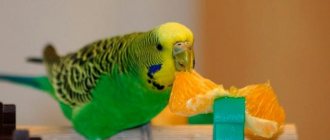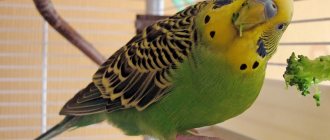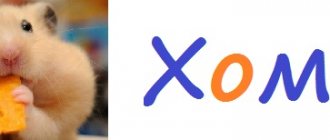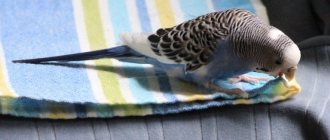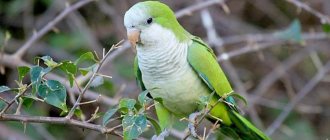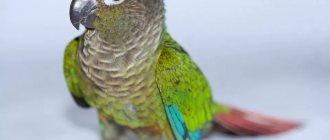Pet lovers often make feathered friends, among which is a very popular species - parrots. Before placing a bird indoors, it is necessary to study in detail the rules of keeping, care and diet of the new pet. Special attention should be paid to food. First of all, you need to familiarize yourself with possible prohibited products that can cause severe damage to the health of the bird. Very often, parrots can independently refuse food offered. Each such refusal can be justified by certain reasons, including simple whims and serious illnesses. If a parrot does not eat fruit, the owner needs to find out the reason and, if necessary, begin treatment for his beloved bird.
Possible reasons
For good health, your bird should enrich its diet with all kinds of vitamins. In natural conditions, birds are forced to independently obtain their own food, which contains a small amount of useful substances. Therefore, parrots do not live long in the wild. This is due both to a poor diet and to the numerous predators that catch the birds. At home, parrots live much longer due to adequate nutrition and the absence of external enemies. Caring owners often note that the parrot does not eat fruit. The fruits contain a large amount of vital substances, but the bird refuses them. There may be several reasons for this phenomenon. Among them are:
- The bird does not consider the food offered to be edible. In this case, it is recommended to try different options for serving the product. For example, if an apple is offered whole, then next time you should serve a small square piece, without the peel. Or cut off a small slice and put it in the feeder. In some cases, a demonstration helps a lot - visually showing that the apple can be eaten. Such actions help a curious pet become interested in what the owner has and try it himself;
- The Corella parrot does not eat fruit due to special eating habits. Birds, like humans, have favorite foods and unloved ones. So if the pet does not eat what is offered to it, it is recommended to replace the fruit with another. An experiment can reveal a bird's favorite food. You should know exactly which fruits are acceptable for a particular type of parrot. Serving prohibited fruits may harm the health of the bird;
- Complementary foods start with the wrong fruit. Despite the high curiosity of birds, young birds may not always dare to try something new. It is recommended to start with apples or pears. When your pet tries one of the new complementary foods, he will be interested in eating a different fruit next time;
- Diseases. Parrots may refuse fruit treats due to the development of the disease. Ornithologists often diagnose cnemidocoptic mange, tracheal mite, and tongue tumor in this family. The cause may also be a foreign object in the throat that prevents the bird from eating. In this case, there will be a refusal of all products, including grain.
How to convince a parrot to try vegetables and fruits?
Patience and a variety of forms of presenting the product is what the owner needs to change the situation. Positively reinforce your feathered pet if it decides to try a new food, emotionally praise it, and it wouldn’t hurt to reward the bird with its favorite treat.
Effective ways:
1) Offer the ignored product in a different form. They always gave you a slice of apple, offer the whole fruit, cut the apple into cubes, make applesauce.
2) Hang assorted fruits on special skewers - holders. This way you will turn food into a toy, which can radically change the parrot's approach.
3) Make it difficult to get food. Don’t just cut vegetables into a feeder, but place them in special “cages”. It is difficult for the bird to pull out large pieces through such obstacles. Here the emphasis is on the curiosity and perseverance of the bird. What is obtained through difficult physical means becomes more attractive in the eyes of the bird.
4) Many fruits can be offered in the form of delicious juice. Vitamin A, contained in squeezed carrots, is even better absorbed by the bird’s body than in its classic form. Remember that juices spoil quickly and should not be left in the drinking bowl like regular water, especially in hot weather.
5) Turn feeding into a search for food. Forage toys are suitable for this. The owner hides the product in a toy, and the bird’s task is to get to it using his ingenuity.
Symptoms
If your feathered friend refuses to accept fruit treats, then you should take a closer look at the accompanying symptoms:
- lack of former activity;
- constantly opens mouth;
- refuses other food;
- stopped flying and chirping;
- the plumage took on an unkempt appearance;
- there is frizz;
- beak growth is observed.
When a parrot does not want to eat the fruits offered, but at the same time its activity is high - it flies well, chirps, and leads its usual lifestyle, then you should not worry too much. You need to be patient and persistent and continue to offer apples, pears, bananas, and tangerines. If accompanying symptoms occur, you should take a closer look at the appearance; perhaps the pet has become infected with parasites that prevent it from eating, and the swallowing process causes pain. If you cannot determine the disease on your own, you should consult a veterinarian.
How to teach a parrot to eat vegetables
It is better to teach parrots to eat vegetables and fruits from an early age - the older the bird, the more difficult it is to teach it something new. There are several ways to do this:
- Place pieces of vegetables next to the grain mixture and dry food that is more familiar to the parrot, or mix them.
- Make salads from grated vegetables - birds really like them.
- Make a toy out of a vegetable and hang it in a cage. Or use special holders for vegetables and fruits. The bird will become curious about what kind of object appeared in the cage, and it will definitely try a new treat.
- Reward your pet with carrots, a small cob of corn and a piece of pepper during classes, if they are held.
Before feeding, the fruits should be washed well and, if necessary, peeled. Peppers, pumpkins, cucumbers and tomatoes can be given with seeds - parrots love to crack them.
With this approach, you will certainly be able to get the bird to first try and then eat fruits and vegetables regularly, even if the parrot has never eaten them before.
Interesting! In New Zealand you can find the kea parrot, which is often called bloodthirsty. This nickname is quite justified - birds of this breed love lamb, and therefore pose a threat to local farmers.
Forbidden vegetables
There are fruits that can negatively affect the well-being of your beloved pet:
- potatoes, green or with sprouts;
- eggplant - they contain solanine, which is poisonous to parrots;
- hot pepper - unlike bell pepper, it can cause great harm to the gastrointestinal tract;
- garlic, onion, celery and other spicy vegetables - the essential oils they contain have a bad effect on the digestive system of parrots;
- radish, radish and daikon have a pungent taste, so they are also prohibited for feeding birds.
All these vegetables should be completely excluded from the parrot's menu.
Methods for solving the problem
The most difficult thing is to teach wavy animals to eat fruits. If a budgie does not eat fruit for a long time, it is recommended to enrich its diet with vitamin complexes or a grain vitamin mixture. Larger bird species eagerly eat all fresh and dried fruits offered.
The demonstration method works well when the owner shows visually and emotionally that the food is very tasty. You can put a piece of pear on the cage or between the bars and pretend that it is very tasty. The owner's affectionate voice and demonstration of eating often encourages the bird to come up and try. Until the parrot learns to eat on its own, its diet should be enriched with vitamin complexes. Among these, a liquid composition added to the drinker has a good effect. Care and patience are all that is necessary for a bird to learn to eat fruits.
Although parrots love to eat fruit, they should be introduced to eating fruit gradually. This is due to the fact that most of the parrots were raised in captivity and have not seen fruit.
Before you start feeding fruit, prepare it. Try grating vegetables on various graters, or putting pieces of treats in a cage, or stringing them on a thread and hanging them like a garland. You can confuse the animal by sprinkling vegetables with the bird's usual food and placing them in the place where the bird likes to play. Put at least some fruit in your pet’s cage every day, even if he doesn’t peck at it, and don’t stop trying different ways of serving it.
It is better to cut the peeled apple into sharp slices to make it easier for the animal to eat; cut the carrots into strips and place them in the rods next to the perch. Don’t forget to rinse these places thoroughly afterwards, or feed the bird from a special fruit bowl. You can cheat a little and add grated vegetables to the porridge or sprinkle grain on top. Over time, the bird will get used to it.
In addition to such passive measures, you can try to attract the bird's attention. For example, tap your finger in the place where food was previously placed. At first, most likely, the bird will be frightened by the noise, and after a while it will show curiosity and notice the food that has appeared. Curiosity will prevail, and the parrot will decide to take a sample. If the pet is still capricious, then you can gently coax it. Most likely, after such attention, the bird will begin to eat new food.
Some breeders force their pets to eat fruit in a very original way. They simply approach the cage with fruit in their hands and begin to eat it with great appetite. The parrots cannot withstand such “pressure” and begin to squeak nervously and ask to try a piece too. After such a demonstration, most often, the bird simply pounces on the desired fruit.
Most often, such problems arise with budgies; they are, of course, stubborn. But you can also “agree” with them. To do this, you should put new food in the cage every day, which they simply ignored day after day. Perhaps this is cruel, but after starving a little, they begin to eat the food offered by the owner. One of the breeders told a terrible story that he starved his pet for several days; this was expressed in the fact that new food was not added until the bird had eaten the offered one. Now the stubborn little guy eats everything that is put in the feeder.
Some birds are selective about food when they are in a cage, but on a walk, perhaps out of the same curiosity, they peck at everything, even food that is not pecked in the cage. Knowing this feature of your pet, you can start giving fruit during walks.
In any case, perseverance and patience will bring the desired result.
Greens that will benefit you
In addition to vegetables and fruits, it is important to supplement your parrot’s diet with greens. However, you should find out exactly what grass can be given to the bird. Among the most accessible are green onions, nettles, dandelions, as well as vegetable tops - beets and carrots.
Green onions
Eating green onions is beneficial not only to humans, but also to birds. This green contains a lot of useful vitamins and microelements necessary for the parrot’s body. Thus, the vitamin C content in onions is twice as much as in lemon. In addition, adding this greenery to the diet prevents the occurrence of helminthic diseases in birds, improves the absorption of food, and also protects against various microbes and bacteria.
Nettle
Nettle is no less useful and important for Corella parrots than green onions. This grass is rich in proteins, vegetable protein, fiber and fats. In addition, it contains a lot of vitamins, calcium salts, sodium and other microelements that are important for birds.
But many people have a reasonable question: can a parrot eat nettles and how can they offer it if it is so stinging? This problem can be solved quite simply: the herb should first be boiled in water for 2-3 minutes, squeezed out and chopped.
Information! Add nettle to the parrot's main food gradually so that the pet can try the new additive and get used to it.
Dandelions
Common dandelions, which grow everywhere, are one of the most complete sources of vitamins for cockatiels among plants. They contain inulin, and the seeds of this herb are enriched with protein. They are given to parrots fresh, and both leaves and flowers are beneficial for them.
Mix familiar food with new food
If the bird refuses to try new food, then you can put fresh vegetables nearby in the feeder where dry food is usually poured. Remember to reduce the amount of dry food. Knowing that there is food in the feeder, the parrot will sooner or later try new food. Especially if he didn’t eat enough and remained half-starved. The usual food can also be sprinkled with the same grated carrots. The parrot will be forced to try a piece of new food while reaching its favorite dry food. For some, this process of starting tasting drags on for a week, while others decide to try it on the first day.
What not to give
We have looked at what you can feed a Corella, but what is forbidden to give to this bird? Let's look at the prohibited components:
- Fruits in a candied state;
- Mango, papaya, avocado;
- Cheese, butter;
- Milk, cream;
- Meat products;
- Fish;
- Seafood;
- Branches of oak, bird cherry, pear, poplar;
- Potato;
- Parsley, dill and other spicy herbs;
- Eggplant;
- Mushrooms;
- Rhubarb;
- Sorrel;
- Garlic and onions.
Is it possible to give persimmons to Corella? Many breeders give this fruit, but this should not be done. This type of fruit is contraindicated for parrots because it can cause health problems.
What fruits and vegetables should not be given to parrots in large quantities?
Our birds, like us, can become fans of a certain type of fruit or berry. Such addictions will not always benefit your parrot. Therefore, the amount of their consumption should be controlled by the owner:
— bananas, dates and persimmons are fruits that, due to the large amount of sugar they contain, may exceed its permissible limit in your parrot’s body;
— beets, spinach and Chinese cabbage in excess can reduce the absorption of calcium, as they contain a large amount of oxalates.
Photo: Richard Bitting
If your parrot's appetite is fine and he eats fruits and vegetables on both cheeks, try giving this type of food in the afternoon. It happens that a bird loves fruits so much that it is ready to eat only them, and the owner carefully adds more and more pieces all the time. As a result, the parrot, despite its appetite, looks thin. And the reason is simple: since fruits and vegetables contain a huge amount of water, the parrot, having eaten in the morning, has actually filled its stomach with “water”, there is no feeling of hunger - there is pleasure from eating. In such cases, it is recommended to feed the bird only grain food until lunch, then the parrot will not have problems with weight and general health.
Do not forget that a domestic parrot is completely dependent on its owner. The quality of a bird's nutrition determines its health and behavior, appearance and mood.
Photo: jazzdancegoof
Fruits, berries and vegetables are an essential component in a parrot's daily diet.
Diet in the wild
Corella parrots originated from Australia. They live in areas with steppe and forest-steppe terrain. Vegetation in these areas is planted with herbs and seeds, which are important for Corella’s nutrition.
What else do Corella parrots eat when living in natural conditions? They will happily eat the following types of food:
- Fruits of trees;
- Eucalyptus nectar;
- Ripe wheat grains;
- Millet.
What food do Corella parrots especially like? The menu should contain protein - insects. They replenish vitamins in the body and increase energy. They drink water in rivers and lakes.
What to feed parrots?
As you know, fruits, vegetables and herbs are an invaluable source of vitamins and minerals, therefore they are useful for any organism, including birds. In order for a pet to be healthy and lead an active lifestyle, its diet should consist of at least 40% of foods such as cabbage, carrots, apples and others. Luckily, many are available year-round. Bird owners buy them for themselves and willingly share them with their pets.
Calcium
Many foods are sources of calcium, and veterinary stores often offer chalk and special mineral stones for parrots. Birds happily gnaw on them for the sake of play, but their diet must still contain vegetables and fruits enriched with calcium. The foods most preferred by pets include dark green vegetables and greens - cabbage, spinach, beet tops.
If a cockatiel consumes enough calcium, its feathers shine, its bones and beak become strong, and the bird is very mobile.
Squirrels
Giving cockatiels foods that contain protein is also important for the bird's body. They are especially necessary during the pet’s molting, which usually occurs twice a year. During such periods, parrots should be offered cottage cheese, boiled eggs, and sprouted grains, in addition to the main food.
However, they should not be given in large quantities or often. Eggs and cottage cheese should be added to food no more than once every 2 weeks, no more than half a teaspoon. It should be borne in mind that such products are perishable. They must be removed from the feeder within an hour after serving, even if the cockatiel did not touch them.
Sprouted grains can be offered to birds more often than cottage cheese and eggs - 2-3 times a week, one tablespoon.
Carbohydrates
Everyone knows that carbohydrates are an essential source of energy for every body. Cockatiels also need to add additional foods containing these microelements to their main food.
Important! Due to a lack of carbohydrates, your pet may become passive and not as playful as under normal feeding conditions. The most accessible products enriched with such elements are a variety of porridges - rice, buckwheat and others.
How long can a parrot live?
One of the most important questions that concerned owners of these birds ask is how long their pet can live without food or water.
Find out in more detail how long a parrot can live without food and water.
Without food
It depends on the age, size, species and health of the bird. On average, a parrot can live about 3-4 days without food. Therefore, if your pet has not eaten for a couple of days, you should worry and seek help from a specialist.
Interruptions in feeding the bird over time lead to its general weakness, deterioration in the quality of plumage, followed by loss. And with longer fasting, it will lead to the death of the bird.
Did you know? Parrot owners have long noticed that their pets have an excellent sense of rhythm. There is even a musical group in the world called “Hatebeak”, whose main vocalist is a parrot named Waldo. Despite the lack of concerts and tours, the group has found its fans and has already recorded three albums.
What fruits can be given to parrots
The range of fruits acceptable for parrots to eat is quite wide, which makes it easier to enrich the body of our feathered pets with useful substances.
Photo: shanlung
You can have fresh fruits and berries : apricot, quince, pineapple (in small quantities), orange, tangerine, lemon, pomelo, watermelon only in season, banana, lingonberry, grapes only in moderate quantities (about 2-4 berries per week), cherries / pitted cherries, cored pears, melon only in season, blackberries, figs, kiwis, strawberries, cranberries, raspberries, nectarines, sea buckthorn (berries and flowers), peach, chokeberry and red rowan, plum, currant, feijoa, date, rose hips, honeysuckle, cranberries, blueberries, apples can be fed to birds all year round
Pomegranate should not be given to those with liver diseases; arugula and spinach are permissible only in the absence of kidney pathologies.
Since we are talking about fresh fruits and berries, it is safest to feed your parrot when they are in season.
Steamed homemade dried fruits are also suitable: raisins, prunes, dried apricots, dates, figs and apples. Store-bought ones are treated with chemicals that are dangerous for parrots.
You can use fresh vegetables: green beans/broccoli/kohlrabi/turnips/beets/turnips/chinese cabbage/cauliflower (pre-dip in boiling water for 40 seconds), zucchini, corn (young milk cobs), chard, carrots, cucumber, sweet bell pepper (can be with seeds), ripe tomato, green peas, lettuce, head and leaf lettuce, pumpkin, chicory.
DON'T : avocado, peanuts, eggplant, potatoes, onions, mangoes, nuts, papaya, dill, parsley, coriander (herbs), tobacco, radish, radish, rhubarb, nutmeg, persimmon, garlic and sorrel, bird cherry berries, fruit seeds (plums, cherries, nectarines and apricots).

